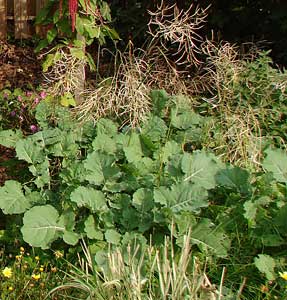"Leaf Gardening" | |
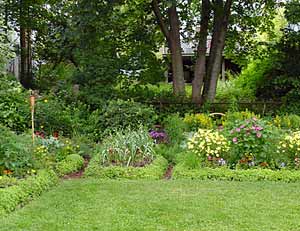 | These garden beds were built up using leaf compost. The compost provides bulk and good soil structure and is a major storehouse of nutrients, especially nitrogen. Larger Pic/More Details |
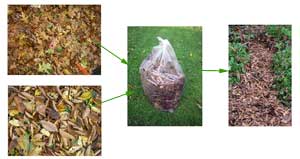 | Leaves are placed in alleys in the fall. Larger Pic/More Details |
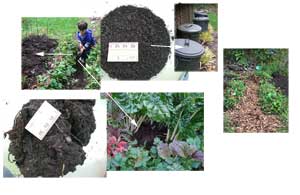 | The leaves produce coarse compost by the next fall. The compost is dug up and placed on top of beds or goes into storage bins and a new batch of leaves is added to alleyways. Larger Pic/More Details |
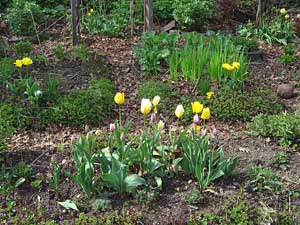 | Beds in springtime. Larger Pic/More Details |
Stabilizing the beds
| I grow shallow rooted species that are low growing, or that I can cut back regularly, on the borders of the beds to stabilize them. Initially I used mostly a creeping Sedum. Primroses are my favourite border plant. They multiply quickly, are easily transplanted, take cutting back, seem quite drought resistant and produce colorful borders in mid to late summer. The ground ivy and Veronica are weeds that flower in spring/early summer. Ajuga works well too, but doesn't spread as quickly as the others. |
Click on pics for larger versions
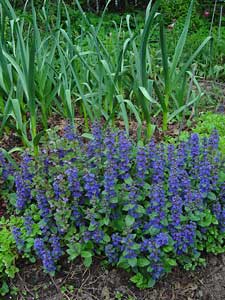 Ajuga |
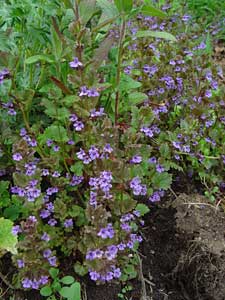 Ground Ivy | 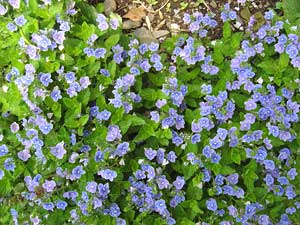 Veronica
|
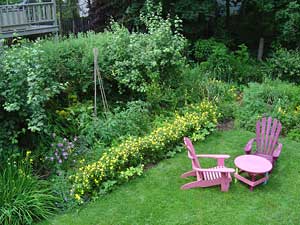 Evening Primrose |
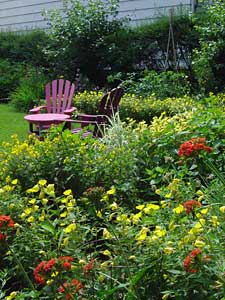 |
Getting Desired Species into the SeedbankI let several annual or biennial crucifer species go to seed, allow some of the seed to drop in place and scatter some of the seed in selected areas or beds. I do this with Dame's Rocket, Red Mustard, a "perennial" kale and wild mustard (I like the leaves of wild mustard in salads, and the flowers in spring time). This way, I never have to plant these species - only thin them and transplant them, and I have lots of plants. This year I am trying this out with two amaranths as well. |
Click on pics for larger versions
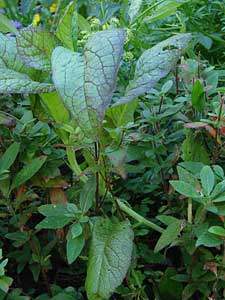 Red Mustard |
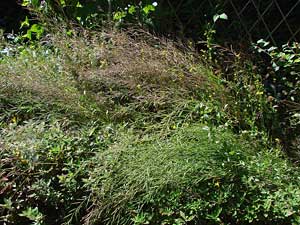 |
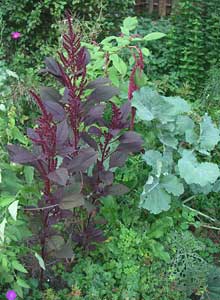 Red Leaf Amaranth |
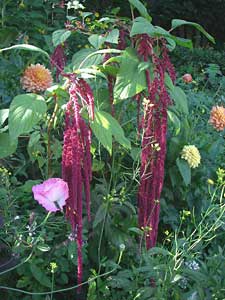 Love-Lies-Bleeding Amaranth |
(This page was prepared by David Patriquin as followup for participants
in a meeting of the Prospect Area Garden Club, Oct. 25, '07)
